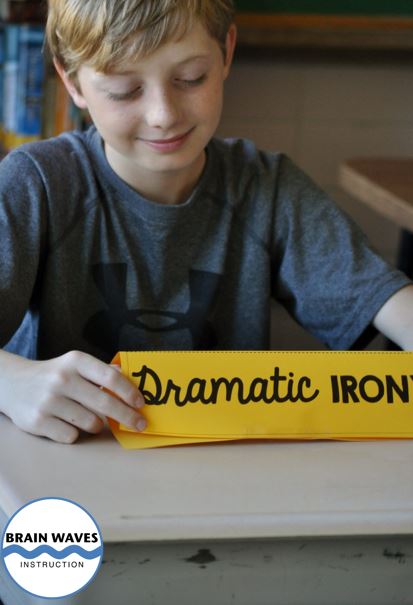As teachers, we're always on the hunt for behavior management techniques that work. That's because we all know that if students aren't behaving, they're definitely not learning. Today, I thought I'd share some techniques that have worked successfully in my classroom. You can read all about them, or you can check out this FREE video where I explain them all:
I also have a ton of FREE bonus resources in the download for the video, so checking it out is totally worth your while!
Technique #1: Behavior Chart
The first technique is one that I learned about when I was student teaching. It's a BEHAVIOR CHART. The set-up is easy. You just place four different colored index cards behind a small card with each student's name in a pocket chart.
Then, using the chart is even easier. First, designate a consequence for each different card in the chart. For instance, you'll likely have a warning card. There's no consequence for that one. Then, you might designate the white card with a "write a letter about your behavior" consequence. Then, the blue card might be "lunch detention." And the red card could be a "meeting." If a student makes a poor choice that impedes his or her own learning or that of their classmates, just simply change the student's card in the chart. It's a very simple and visual way to manage students' behavior.
If one of the consequences is "write a letter," you can just create a letter format for students to grab when they need to write to you. I always saved students' letters just in case parents or administration had any questions about how students were behaving in class. If you're looking for the letter format, you can find it in the download for the video.
Technique #2: Behavior Cards
Another simple idea is BEHAVIOR CARDS. They're just two sets of cards. One is a "keep it up" card that acknowledges good behavior. The other is a "stop" card that encourages students to make a better choice. Make copies of each set of cards. Then, after students know about the cards and how to act when they receive them, make it a habit to hand out "keep it up" cards all the time. Then, if a student makes a poor choice, you can just stick a "stop" card on his or her desk. When the student makes a better choice, just swap out the stop card with a keep it up card...and continue teaching.
Technique #3: Positive Behavior Punch Card
Another behavior management technique that really works is the POSITIVE BEHAVIOR PUNCH CARD. To implement these in your classroom, first make a set of the card (available for free here). Then, give each student a punch card. Explain to students that when they are following directions, working well at learning stations, completing their daily This or That Warm-Ups....or any other behavior that you want to see more of, you'll punch a hole in their behavior card.
Their goal is to earn 10 positive behavior hole punches. These cards can be collected and redistributed each class period if you would like. This system works because it focuses on positive behavior.
Once I had a few systems for managing students' behavior, I found that finding ways to recognize and/or reward students for doing the right thing was just as effective for improving students' behavior.
Technique #4: Prize Cards
One idea is PRIZE CARDS. Typically, I make about 25 cards. Ten of them have tangible rewards
listed on them like pick your own seat, or skip one question on a test, or
listen to music while you work and the other 15 cards have expressions of
praise like “you’re a rock star,” or “you are so important to this class.”
Then, after students meet a behavior goal whether it’s getting all the punches on their punch card, or earning 5 “keep it up cards,” or going an entire week without a card flip on the behavior chart they have a chance to pick a card from a bag or basket. They might get a card with a compliment or an actual reward…this keeps the prizes random and fun. I have a set of these in my classroom management resource, but they’re certainly something you can create on your own.
Technique #5: Notes of Encouragement
Another way to recognize students is to write simple NOTES OF ENCOURAGEMENT to them. I like to write "great news" notes to students. These notes make it super simple to quickly write a note to your students. Students will treasure your kinds words and work even harder to earn more. You might want to keep a chart to record who you've already written notes to. Find a set of notes HERE.
The ultimate goal of behavior management is to create an environment where all students can learn and feel successful. Creating systems that are easy to implement, fair, consistent, and accentuate the positive have been game changers in my classroom. I hope that you've found some ideas to help you and your students. Don't forget to check out this video to learn more and download a bunch of classroom management freebies!
Thanks for stopping by,
Mary Beth






















































